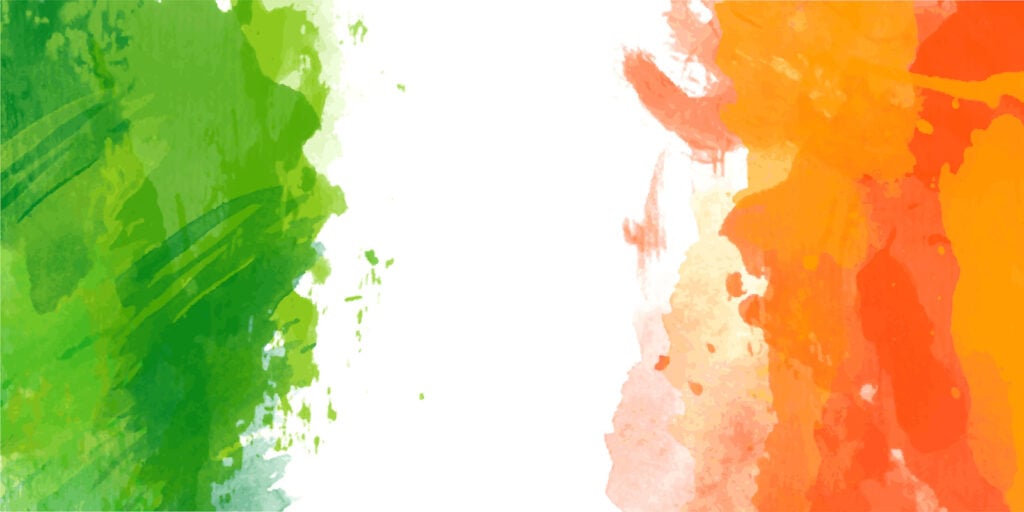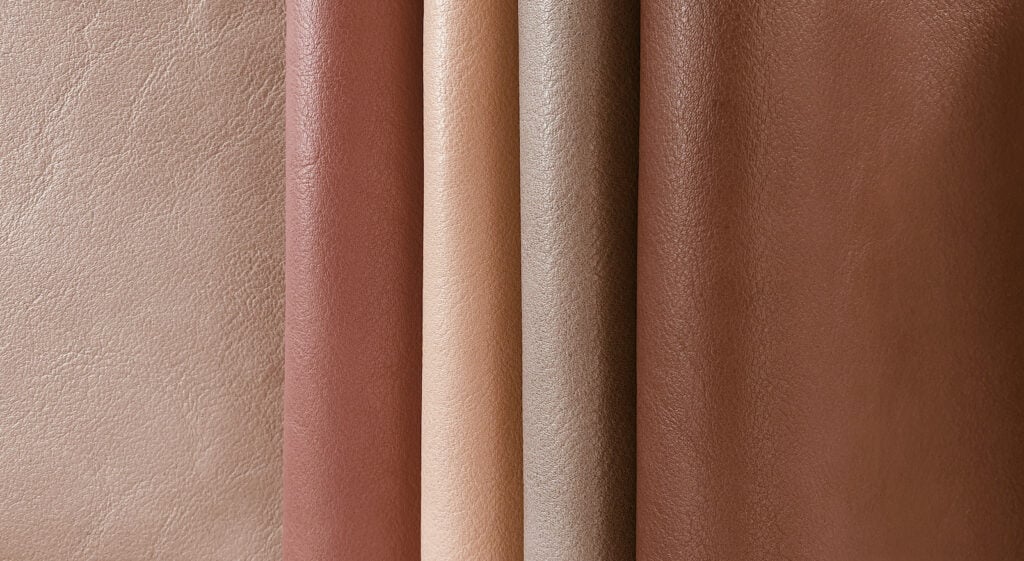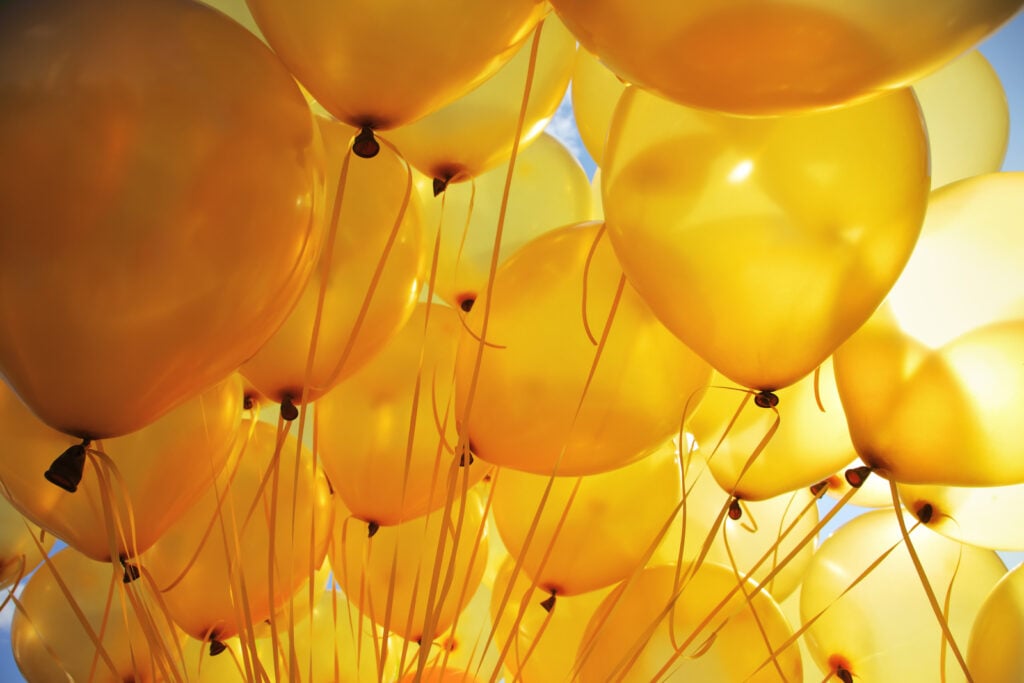
Orange and green are two contrasting colors where orange is warm and green is cool. Yet, they’re not far enough apart on the color wheel to be considered complementary colors. They can be used together in designs, but only in unique ways.
Since orange and green aren’t regularly paired together, many people don’t know what color they make when mixed. So let’s look at the results that come out of combining these two colors using different mediums.
What Color Do Orange and Green Make in Paint?
When you mix orange and green paint, you’ll get light brown. That’s because orange is made of yellow and red, and green is made of yellow and blue. So, mixing orange and green is like mixing all three primary colors, which makes brown.
However, there will be more yellow than red and blue in your mixture, which is why the result will be light brown rather than a dark, muddy brown color.
Understanding the RYB Color Model

RYB is the color wheel that’s taught in most early art classes. It’s used for mixing paints and other physical art mediums. It’s a form of subtractive color mixing, which means wavelengths are removed from the mixture instead of added. Colors are mixed in paint by swirling two pigments together until they create a new color.
The primary colors on the RYB color model are red, yellow, and blue. Combinations of those colors can mix together to create the secondary colors, which are purple, green, and orange. Mixing an equal amount of the three primary colors will give you brown.
Other Ways to Make Brown Paint
Mixing orange and green is a great way to get light brown paint, but it’s not the only way to make brown. The most common way to get brown is to mix an equal amount of red, yellow, and blue. However, you can mix any complementary colors to get it because that’ll be the equivalent of combining all three primary colors. Mixing the primary colors gives you a darker brown than orange and green do.
If the brown paint you make doesn’t look quite like you wanted, you can make tints and shades of it using white or black. You can also try adding different amounts of the primary colors to adjust it. Extra yellow will make it lighter, extra blue will make it darker, and extra red will make it warmer.
Making Tints and Shades of Brown

After mixing orange and green, you might not like how the result turns out. If that’s the case, you can create tints and shades of the color to change its appearance. Here are some ways to do that.
Mixing Lighter Brown
Tints are lighter versions of a color that have been created by adding white to it. The more white you add, the softer and paler the color will look. Instead of adding white, you can also add more yellow. Yellow will lighten the mixture while keeping it bright and vibrant.
Mixing Darker Brown
Shades are darker versions of a color that are created by adding black. A little black paint can go a long way so use it sparingly. You could also add extra blue instead of black, but it may give the brown a blueish hue.
Brown Color Meaning
Brown is the color of the ground beneath us, so it has a lot of bold meanings like reliability, stability, and comfort. It’s meant to simplify, protect, and stabilize. It’s a great neutral color with many positive meanings.
This color is often related to appreciation, support, and wisdom. However, some people might associate it with negative meanings, such as being dull, boring, and predictable. The traits depend on the shade of brown and the context around it.
What Color Do Orange and Green Make in Lights?

In lights, the color model is a little different. Green is a primary color while orange is a tertiary color. So, it’s unlikely that you’d need to mix them together, but if you do, you’ll get yellow.
Yellow is a mix of green and red on the RGB color wheel, while orange can be made using more red than green. So, adding green to orange will make red and green equal again, which results in yellow.
Understanding the RGB Color Model
The RGB color model is used for lights and digital displays. It’s a form of additive mixing, which means wavelengths are added together to create new colors.
In this color model, the primary colors are red, green, and blue. Combinations of those colors can mix together to make the secondary colors, which are cyan, magenta, and yellow. All three primary colors combined at full brightness make white light.
The CMYK color model is the opposite of the RGB. CMYK is a subtractive color model used for ink and printing. In that color model, the primary colors are cyan, magenta, and yellow. Then, the secondary colors become red, green, and blue. Since orange is still a tertiary color in CMYK, orange and green will also make a yellowish color when mixed.
How Do You Mix Colored Lights?

If you have orange and green colored lights and want to experiment with color mixing, all you have to do is layer one light on top of another to mix the colors. However, if you only have primary colors, you can still make the other colors. You can layer red, green, and blue on top of each other at different brightnesses to make new colors.
For example, to make orange, you can use red at full brightness, green at half brightness, and no blue. This method further proves that if you add green to orange, it’ll make red and green equal, which creates yellow.
Mixing lights is often more confusing for people than mixing paint, but by experimenting with different color combinations, you can get a better understanding of the RGB color model, besides the knowledge you may already have from working with colors on a computer.
How Do Our Eyes Perceive Color?
Seeing colors is so much more complicated than we realize. When we look at the color we’ve mixed, a lot is going on in our eyes. The color we see appears that way because it’s reflected back to us.
On the visible light spectrum, all the colors occur at different wavelengths. Violet is on one end with short, frequent wavelengths, while red is on the other end with long, less-frequent wavelengths. So, if we look at a red apple, the long red wavelengths will reflect off that apple, while all the other wavelengths get absorbed into it. That’s why the apple looks red to us.
In our eyes, we have cones and rods, which help us see colors. Cone cells help us see colors in bright light, while rod cells are more sensitive and allow us to see colors in dim lighting. Both cells work together to help us discern the many beautiful colors that we mix.
Yellow Color Meaning

Yellow is a bright, vibrant color that’s often associated with happiness, optimism, and positivity. It can inspire, amuse, and energize the people who admire it.
This color can be a sign of warmth, creativity, and perception. Yet, it can sometimes be seen as a symbol of caution, cowardice, and deception as well. So, consider all these meanings before deciding how you’d like to use this color.
Can You Design With Orange and Green?
Orange and green aren’t commonly used together in designs because they tend to clash. They’re both bold and vibrant colors, so they can be a bit much when used together. However, using small amounts of them can help add accents to a room or an art piece. For example, a bright orange wall section behind a beige couch or bright green pillows on a white bed can help add pops of color to the space without going overboard.
Even though you might not want to use green and orange together, they can work well separately. Orange by itself is a loud color, but you can use small amounts of it with warm colors like red, yellow, and pink. Green goes well with colors like blue, yellow, and pink. Both orange and green work well with neutral colors like white, gray, or beige.
These two colors might not be the perfect combination, but when used together correctly, they can make unique designs. However, their mixtures in both paints and lights won’t always work well with these two colors.

Why Do Orange and Green Mix Into Different Colors?
Different types of mediums use different color models, which is why they don’t always create the same results. The method for mixing pigments, dyes, and lights will also differ, further affecting the results.
For example, painting is a form of subtractive color mixing which involves swirling two paint colors together to create a new color. Mixing lights involves additive mixing that layers one color on top of another to create a new one. Both are effective ways of mixing, but since they’re different methods, their results may differ.
Orange and green might not be colors you’d think to mix together, but they can create unique mixtures and designs when used right. Experimenting with color mixing can help you better understand color theory and will ultimately improve your design skills.



